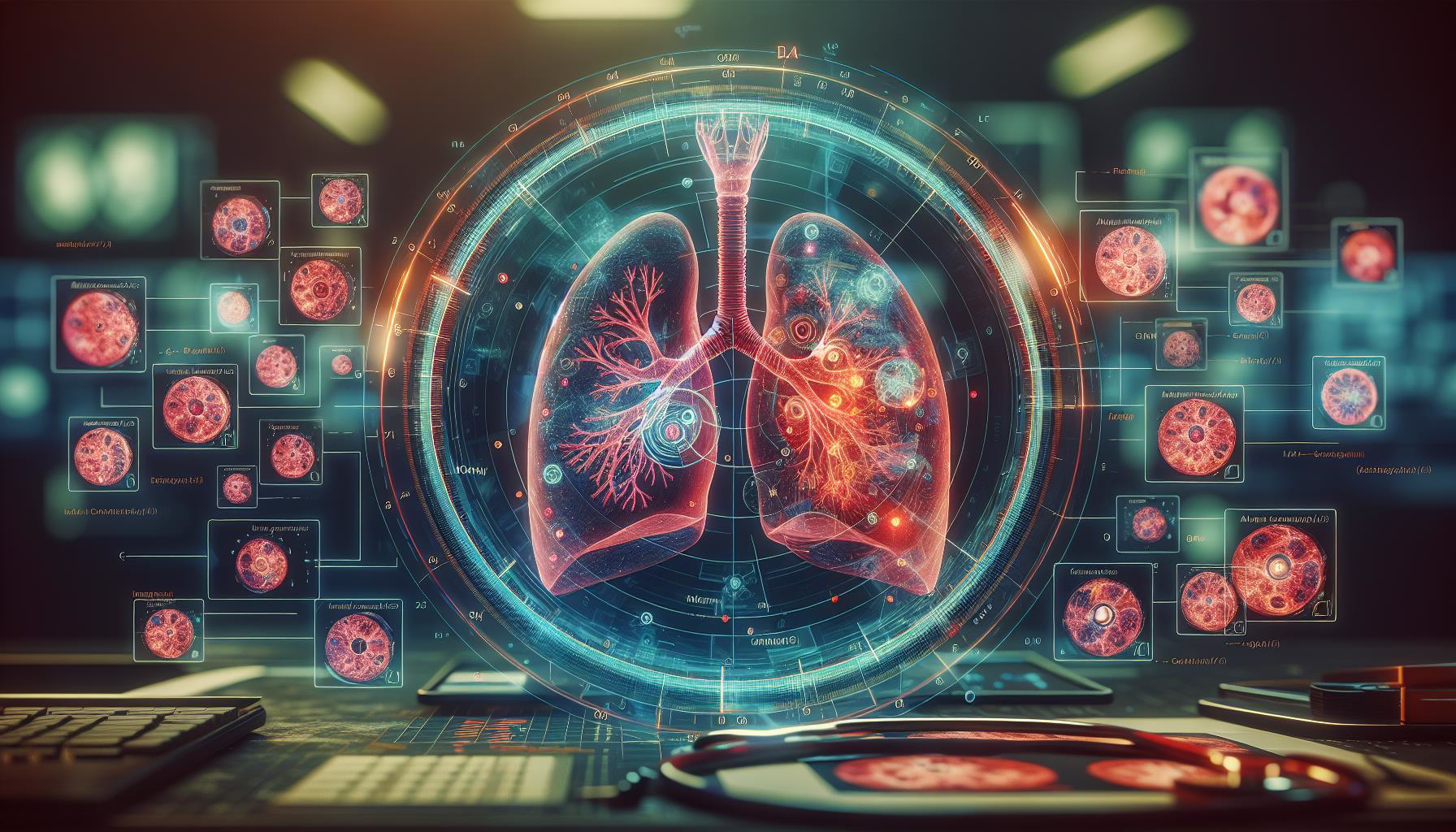Introduction to AI in Lung Cancer Diagnosis
Lung cancer remains one of the most challenging diseases to diagnose and treat effectively. Traditional diagnostic methods often rely on the expertise of pathologists to analyze tissue samples, a process that can be time-consuming and subject to human error. However, recent advancements in artificial intelligence (AI) are poised to revolutionize this field. According to a report by ScienceDaily, a team of researchers has developed a digital pathology platform based on AI to improve lung cancer diagnosis. This platform utilizes advanced algorithms to analyze medical images, offering more accurate diagnoses.
How the AI-Based System Works
The new AI-based system employs sophisticated algorithms to scrutinize medical images of lung tissues. These algorithms are trained on vast datasets of annotated images, enabling them to identify patterns and anomalies that may indicate the presence of cancerous cells. By automating the initial stages of diagnosis, the system can quickly flag suspicious areas for further examination by a pathologist.
This approach not only speeds up the diagnostic process but also enhances its accuracy. The AI system can detect subtle changes in tissue structure that might be overlooked by the human eye, thereby reducing the likelihood of misdiagnosis. This is particularly crucial in lung cancer, where early detection significantly improves treatment outcomes.
Benefits for Pathologists
One of the primary advantages of this AI-based platform is its ability to assist pathologists in their work. By providing a preliminary analysis of tissue samples, the system allows pathologists to focus their expertise on the most critical cases. This can lead to more efficient use of medical resources and potentially reduce the workload on healthcare professionals.
Moreover, the AI system can serve as a second opinion, offering an additional layer of verification for diagnoses. This collaborative approach between human and machine can enhance the overall reliability of lung cancer diagnoses, ensuring that patients receive the most accurate and timely information about their condition.
Potential for Early Detection
Early detection is a key factor in the successful treatment of lung cancer. The AI-based platform’s ability to identify cancerous tissues more efficiently can lead to earlier diagnosis, giving patients a better chance of successful treatment. Early-stage lung cancer is often more treatable and has a higher survival rate compared to advanced stages.
By integrating AI into the diagnostic process, healthcare providers can potentially catch lung cancer at its earliest stages, when it is most responsive to treatment. This could result in improved patient outcomes and a reduction in lung cancer mortality rates.
Challenges and Considerations
While the benefits of AI in lung cancer diagnosis are clear, there are also challenges to consider. One of the primary concerns is the need for extensive training data to ensure the accuracy of AI algorithms. High-quality, annotated datasets are essential for training these systems, and obtaining such data can be a complex and resource-intensive process.
Additionally, the integration of AI into clinical practice requires careful consideration of ethical and regulatory issues. Ensuring patient privacy and data security is paramount, and healthcare providers must navigate the regulatory landscape to implement AI technologies responsibly.
Future Directions
The development of AI-based diagnostic tools for lung cancer is just the beginning. Researchers are continually exploring new ways to enhance these systems, incorporating advancements in machine learning and computer vision. Future iterations of AI platforms may offer even greater accuracy and efficiency, further transforming the field of pathology.
In addition to lung cancer, AI has the potential to revolutionize the diagnosis of other types of cancer and various medical conditions. As these technologies evolve, they will likely become an integral part of the healthcare landscape, offering new opportunities for early detection and improved patient care.
Conclusion
The integration of AI into lung cancer diagnosis represents a significant advancement in medical technology. By leveraging advanced algorithms to analyze medical images, the new AI-based platform developed by researchers offers more accurate and efficient diagnoses. This innovation has the potential to assist pathologists, facilitate early detection, and ultimately improve patient outcomes.
As the field of AI continues to evolve, its applications in healthcare will likely expand, offering new possibilities for the diagnosis and treatment of various diseases. The future of lung cancer diagnosis looks promising, with AI playing a pivotal role in enhancing the accuracy and efficiency of medical care.
References
1. “Deep Medicine: How Artificial Intelligence Can Make Healthcare Human Again” by Eric Topol
2. “Artificial Intelligence in Healthcare” by Adam Bohr and Kaveh Memarzadeh
3. “Machine Learning for Healthcare” by Kevin P. Murphy
4. “The AI Advantage: How to Put the Artificial Intelligence Revolution to Work” by Thomas H. Davenport
5. “Artificial Intelligence: A Guide for Thinking Humans” by Melanie Mitchell
